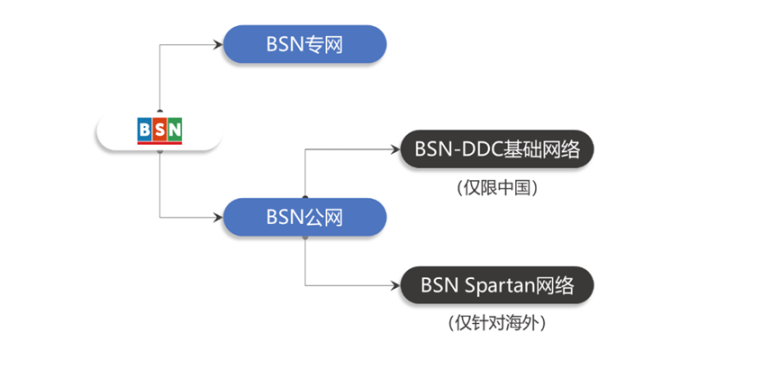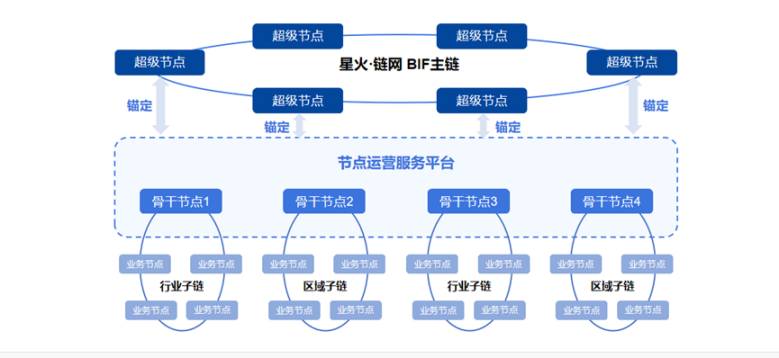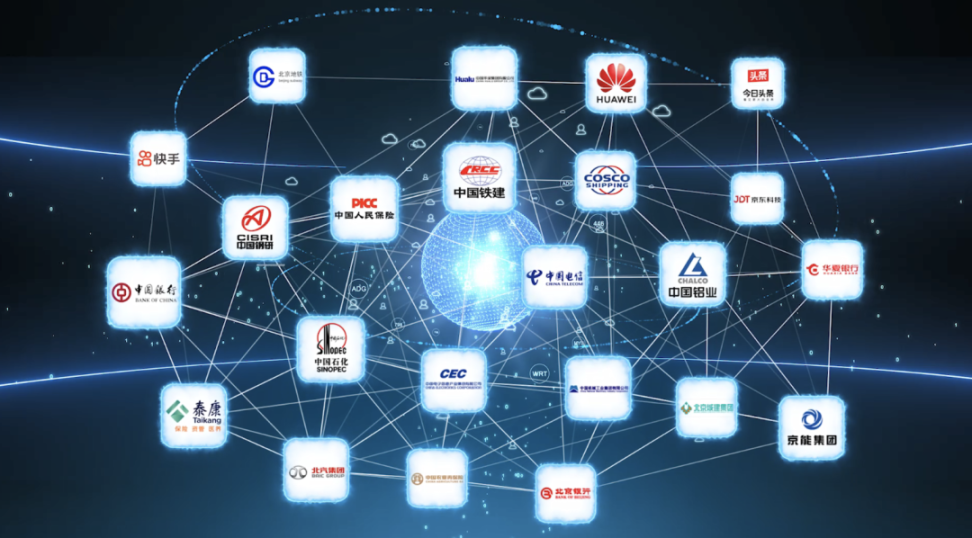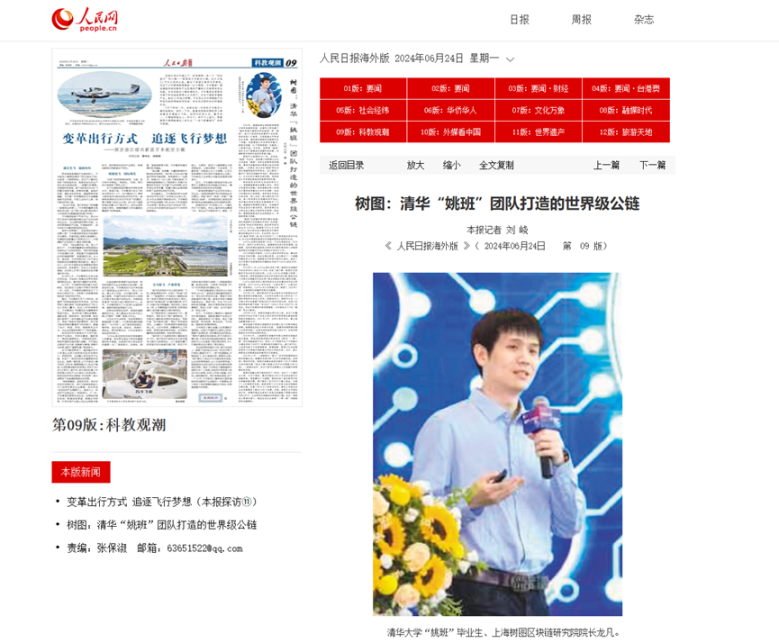Written by: Frank, PANews
Stablecoins are becoming a strategic new track for major global economies, with the United States, the European Union, Hong Kong, and others competing to introduce regulatory frameworks in an effort to seize the initiative. However, the issuance of any stablecoin relies on a key underlying infrastructure—public blockchains.
Against this backdrop, the industry viewpoint that "China currently lacks a globally influential public blockchain, which should be led by state-owned enterprises" has sparked heated discussions. This viewpoint is not unfounded, but it also tends to overlook a fact: since blockchain was elevated to a national strategic level in 2016, a blockchain infrastructure network led by a "national team" aimed at serving the real economy has already taken shape.
From the global connector BSN, the industrial base "Xinghuo Chain Network," to the technological cornerstone "Chang'an Chain," and to the public blockchain "exception" Conflux, they collectively form China's unique blockchain landscape. As the demand for stablecoins becomes increasingly urgent, which of these networks is most likely to break through and become the trusted foundation for China's stablecoin vision, aimed at the global market?
To accurately understand China's strategic intentions, it is essential to redefine the term "public blockchain" in the Chinese context. Equating it directly with permissionless chains can lead to serious conceptual deviations. In China, the "public blockchain" promoted at the national level is essentially closer to a "public infrastructure" or "trust infrastructure" that is guided by the state, allows multiple parties to participate, but is ultimately controllable.
Among these, several currently influential entities in the industry include the Blockchain Service Network (BSN), Xinghuo Chain Network, Chang'an Chain, and the recently discussed public blockchain Conflux. PANews conducts an inventory analysis of these blockchain networks to see which is more likely to become the foundation for China's stablecoins.
Blockchain Service Network (BSN): Multi-framework Adaptation, Focused on Non-token Concept
In 2018, BSN was jointly initiated by the National Information Center, China Mobile, China UnionPay, and Beijing Hongzao Technology, and is a public blockchain infrastructure. It currently consists of BSN's private network and public network, with the private network primarily serving enterprises, mainly through the "BSN Distributed Cloud Management Platform," which supports the establishment of a distributed cloud system environment based on blockchain in various physical IDC data centers, public clouds, and private clouds.

The BSN public network is more aligned with the concepts of public chains and consortium chains that we are familiar with. Within the BSN public network system, it is divided into the BSN-DDC basic network (an open consortium chain aimed at China) and the BSN Spartan network (a public distributed cloud service network composed of non-token public chains) aimed at overseas markets.
Currently, within the DDC network system, there are several open consortium chains such as Yan'an Chain, Wenchang Chain, Tai'an Chain, Wuhan Chain, and China Mobile Chain. These networks adopt frameworks such as Ethereum, EOS, FISCO BCOS, and Corda, with main application scenarios including NFTs (digital collectibles), distributed domains, distributed identities (DID), and trusted data storage. The DDC network system is a consortium chain system without token design, and on-chain service fees need to be recharged with fiat currency, targeting the domestic market.
The consensus mechanism of the BSN Spartan network is more aligned with public chains like Ethereum, but the difference remains that it is a non-token public chain. The BSN Spartan currently consists of three sub-chains based on Ethereum, Cosmos, and PolygonEdge. As of August 4, the daily transaction volumes of these three chains were 1,068, 844, and 938, respectively.
Overall, BSN's core innovation lies in its multi-framework adaptation, with unified adaptation and management capabilities for dozens of mainstream blockchain underlying frameworks (including consortium chains and public chains) globally. Through a standardized adaptation mechanism, developers can "plug and play" to choose different underlying chains without worrying about the complex deployment and operation details, akin to a universal "operating system" for the blockchain world. However, the lack of a token mechanism may become a constraint in light of the growing demand for stablecoins. He Yifan, Executive Director of the BSN Development Alliance and CEO of Hongzao Technology, has previously expressed strong aversion to virtual currencies, considering them a massive Ponzi scheme.
Xinghuo Chain Network: Supported by the Ministry of Industry and Information Technology, Focused on the Industrial Sector
According to official information, the "Xinghuo Chain Network" is a national-level blockchain new-type integrated infrastructure system constructed under the leadership and special support of the Ministry of Industry and Information Technology, led by the China Academy of Information and Communications Technology, in collaboration with several large enterprises and institutions such as Beihang University, Beijing University of Posts and Telecommunications, and China Unicom.
From an architectural perspective, the "Xinghuo Chain Network" is divided into two layers: the first layer consists of a main chain formed by super nodes, used for managing identifiers, public data, or other legal assets and regulations that the state may provide in the future. The second layer consists of sub-chains linked by backbone nodes, connecting various applications in industry or region.

It is noteworthy that the "Xinghuo Chain Network" is a permissioned public blockchain network, and from the current information, it also does not have a token design. Similarly, the "Xinghuo Chain Network" is divided into a domestic main network and an international version called the ASTRON network. Currently, the established super nodes of the "Xinghuo Chain Network" include Xiamen and Liuzhou; backbone nodes include Jiaozhou, Hengqin, Suzhou, etc.; and international nodes include Malaysia and Macau. The node admission threshold for the "Xinghuo Chain Network" is relatively high, requiring local government promotion for construction.
The application scenarios of the "Xinghuo Chain Network" are highly focused on the industrial sector, including: full lifecycle traceability of high-end manufacturing products, collaborative management of complex supply chains, digital identity authentication and predictive maintenance of industrial equipment, and trusted sharing and trading of industrial data.
Chang'an Chain (ChainMaker): Multiple Policy Inclusions, Participation of State-owned Enterprises and Internet Giants
The "Chang'an Chain" is led by the Chang'an Chain Ecological Alliance, which is initiated by the Beijing Microchip Blockchain and Edge Computing Research Institute (referred to as "Microchip Institute") under the guidance and support of the Beijing municipal government.
The Chang'an Chain Ecological Alliance includes key state-owned enterprises in critical fields such as the State Grid, China Construction Bank, Industrial and Commercial Bank of China, China Unicom, COFCO Group, as well as internet giants like Tencent and Baidu. Currently, the alliance has more than 50 members.

In November 2021, the "Chang'an Chain" was included in the "14th Five-Year Plan for International Science and Technology Innovation Construction in Beijing." In January 2022, it was mentioned in the Beijing government work report. The "Beijing Blockchain Innovation Application Development Action Plan (2025-2027)" also mentions the "Chang'an Chain" again.
In addition to its strong background, the technical advantages of the "Chang'an Chain" are also quite evident. Officially, it claims that its transaction throughput (TPS) can reach 100,000, capable of meeting the high concurrency demands of large-scale financial and governmental scenarios.
Conflux: Developed by Tsinghua's "Yao Class" Team, the Only Public Chain in Mainland China with Token Issuance
Unlike the above blockchain networks with obvious consortium chain characteristics, Conflux is currently the only public chain in mainland China that meets regulatory requirements. Conflux was founded in 2018 by Long Fan, a graduate of the "Yao Class" and a PhD from MIT, with Academician Yao Qizhi serving as the chief scientist and participating in the theoretical design of core algorithms. In January 2020, the Conflux team officially established the Shanghai Tree Graph Blockchain Research Institute in Shanghai. In October of the same year, the Conflux mainnet was officially launched.
As a complete public chain, Conflux also has a governance token, CFX. Despite strict regulatory policies on cryptocurrencies in mainland China, Conflux successfully issued and operates its token CFX, making it a unique "exception."
CFX, as a global cryptocurrency asset, has been listed on several mainstream cryptocurrency exchanges, such as Binance, OKX, and Gate.io. Its market price and market capitalization are influenced by various factors, including technological progress, ecological development, and macro market conditions. For example, recent positive news regarding the Conflux 3.0 upgrade and support for offshore RMB stablecoin plans has led to a significant short-term increase in its token price.

Moreover, the backing of Conflux should not be underestimated, as it has been reported multiple times by mainstream official media such as the People's Daily and has deep collaborations with several state-owned enterprises, including China Telecom and China Mobile. Additionally, Conflux is collaborating with fintech company AnchorX to explore the issuance of a stablecoin pegged to offshore RMB (AxCNH) to support cross-border payment needs in countries along the "Belt and Road" initiative.
Who is More Likely to Become the Technical Foundation for Stablecoins?
In addition to the aforementioned blockchain networks with strong backing, there are several consortium chains in China, such as the State Grid Chain (State Grid), Unicom Chain (China Unicom), China Mobile Chain (China Mobile), ICBC Chain (Industrial and Commercial Bank of China), Ant Chain (Ant Group), Zhixin Chain (Tencent), and Zhongxiang Chain Network. Most of these consortium chains are also initiated by state-owned enterprises or technology giants, each having unique advantages and influence in their respective fields.
But returning to the initial question, does China have a public chain with international influence? As of now, the answer should be lacking. The main reason is that most of China's blockchain networks are structurally consortium chains, with significant differences in consensus mechanisms and economic models compared to overseas public chains like Ethereum and Solana.
Among the existing public chain infrastructures, the one most likely to grow into an internationally recognized domestic public chain is "Conflux." From a technical perspective, "Conflux" possesses internationally accepted public chain characteristics and has originality and performance advantages in technology. Its official background and clear offshore RMB stablecoin exploration plans place it in a leading position in the stablecoin arena.
Among other blockchain networks, "Chang'an Chain" also has the potential to become the underlying architecture for stablecoin issuance. In 2021, its research institution, the Microchip Institute, signed a strategic cooperation agreement with the central bank's research institute to jointly promote enterprise-level applications of digital RMB based on the "Chang'an Chain." Additionally, the technical characteristics of the "Chang'an Chain" also support token design, meeting the technical requirements for stablecoin issuance. Its strong ecosystem of state-owned enterprises gives it a natural advantage in promoting stablecoin applications in inter-institutional or specific scenarios.
Of course, in addition to this, as listed companies in several European and American countries begin to treat cryptocurrencies as treasury assets and participate in the governance of public chains, China's public chain journey may also have a third option, which is to participate in the governance of international mainstream public chains. After all, in a decentralized world, the distinction of national borders often comes down to a percentage of computing power.
免责声明:本文章仅代表作者个人观点,不代表本平台的立场和观点。本文章仅供信息分享,不构成对任何人的任何投资建议。用户与作者之间的任何争议,与本平台无关。如网页中刊载的文章或图片涉及侵权,请提供相关的权利证明和身份证明发送邮件到support@aicoin.com,本平台相关工作人员将会进行核查。




